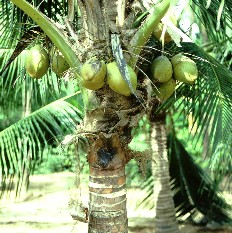Dear Matt,
Jan forwarded me an email with some interesting questions on biofuel.
Although I pretty much left the "industry" after the thesis (now doing
business consulting in germany), I'd like to share some ideas - I'm still so
happy that people are interested in what I wrote back in those days...
On the oil quality issues:
The people in Weihenstephan, a university in southern germany have been
systematically analysing how oil production parameters correlate to
variable oil parameters for many years and continue to do so, for the
case of rapeseed/canola. This is where the hypothesis of a correlation
of pressing-temperature and phosphor comes from. The most recent focal
point of interest for the case of canola is actually not the processing
itself but rather the raw material - especially ripeness/age of the raw
material (canola seeds) - which was (recently I believe) discovered to
have even more influence on contents of Phosphor, Ca, Mg....
for any larger project in this direction it might be a good idea to have
someone have a closer look on their research. Here's where all
important papers are published, for a start:
http://www.tfz.bayern.de/sonstiges/16411/
in german... :-(
On the specific issues you raise:
The low phosphor content of the sample from RMI did surprise me as well
- any influence of the raw material (type of coconut-tree, age of the
tree, time between cutting and pressing, way of drying, etc...) and
production parameters (temperature, pressure, type of press, preparation
of material, etc..) could be relevant.. sorry to say that its just not
known yet... yet it's influence on success or failure of using it in
the RMI - I wouldn't say is more than a few %...
On the question/source of confusion you mention about the low FFA level
and high phosphor content - I don't know if it is correct to say that
FFA is a "precursor" to phospholipids. As far as I remember it is
important to keep in mind that what you actually measure is the chemical
element Phosphor - which is there in a certain quantity and can't be
created by any chemical reactions inside the oil. (values for FFA and p
are often correlated, yet not necessarily with a mutual causality..)
On a general note:
I personally believe that researching parameters in a systematic and
scientific way is a very nice idea, yet one should be aware that this
has been tried in Germany for many years and is an ongoing process,
still with many new insights and changes in the focal point of interest.
For the case of the South Pacific, I'd personally recommend to focus on
the most important issues that are state-of-the-art: keep total
contamination down (during processing and all the way until the tank!!),
keep the water content down (to prevent spoiling of the oil) and get a
proper process chain going without major delays between copra-making and
using the oil...
Above that, I believe that the extra benefit of improving certain values
like p, mg, ca, etc.. will improve the case for straight cno in engines
by lets say some 5-10% What I see as the main challenge for cno in the
pacific is yet rather to find the right Applications to use CNO
successfully: with
1.the right engine (e.g. small modern, even whirlchamber engine versus
the old robust listers or large 2-MW-engines);
2.the right inherent use of the machine (a private car versus a
base-load-generator, or: putting a generator in a village with few
electrical devices (low load) vs. replacing an existing generator (high
load)); and
3.the right social-technical setting to prevent problems (the people
using it, access to qualified technicians etc...)
that's what I'd suggest to focus on in the Pacific...
Good luck, and loads of fun!
Daniel
Thanks to: Daniel Fuerstenwerth: happy_daniel (at) web.de & Matt Carr:
mattjcarr (at) yahoo.com
--
Check for earlier Pacific Biofuel posts: http://pacbiofuel.blogspot.com/

No comments:
Post a Comment